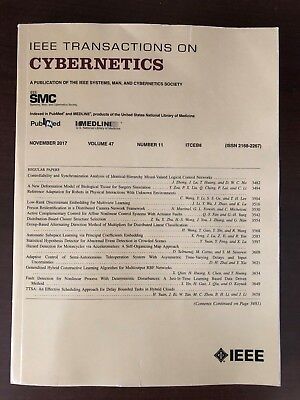Adaptive Dictionary Learning for Multiview Subspace Clustering
IF 9.4
1区 计算机科学
Q1 AUTOMATION & CONTROL SYSTEMS
引用次数: 0
Abstract
Multiview Subspace Clustering (MvSC) has demonstrated impressive clustering performance on multiview data. Most existing methods rely on either raw features or reduced-redundancy data for subspace representation learning, followed by spectral clustering to derive the final results. However, these methods maintain a fixed feature space during subspace learning, which limits information propagation and compromises both representation quality and clustering performance. To address this issue, this article proposes an adaptive dictionary learning approach for MvSC (AMvSC), which seamlessly integrates redundancy reduction and representation learning within a unified framework to facilitate mutual information propagation. Specifically, an adaptive dictionary learning strategy is designed to automatically reduce redundancy and noise in the original feature space during the subspace representation learning process. This strategy ensures effective information exchange, thereby enhancing the quality of the learned representations. Additionally, low-rank constraints, combined with smoothness and diversity regularization, are applied to further refine the subspace representations and comprehensively capture complex correlations among samples. Finally, an alternating optimization algorithm is developed to iteratively update the unified learning model. Extensive experiments validate the effectiveness and superiority of the proposed method.多视图子空间聚类的自适应字典学习
多视图子空间聚类(MvSC)在多视图数据上表现出了令人印象深刻的聚类性能。大多数现有方法依赖于原始特征或减少冗余的数据进行子空间表示学习,然后通过谱聚类来获得最终结果。然而,这些方法在子空间学习过程中保持固定的特征空间,这限制了信息的传播,影响了表征质量和聚类性能。为了解决这个问题,本文提出了一种用于MvSC (AMvSC)的自适应字典学习方法,该方法将冗余减少和表示学习无缝地集成在一个统一的框架内,以促进信息的相互传播。具体而言,设计了一种自适应字典学习策略,在子空间表示学习过程中自动减少原始特征空间中的冗余和噪声。该策略确保了有效的信息交换,从而提高了学习表征的质量。此外,将低秩约束与平滑和多样性正则化相结合,进一步细化子空间表示,全面捕获样本之间的复杂相关性。最后,提出了一种交替优化算法来迭代更新统一学习模型。大量的实验验证了该方法的有效性和优越性。
本文章由计算机程序翻译,如有差异,请以英文原文为准。
求助全文
约1分钟内获得全文
求助全文
来源期刊

IEEE Transactions on Cybernetics
COMPUTER SCIENCE, ARTIFICIAL INTELLIGENCE-COMPUTER SCIENCE, CYBERNETICS
CiteScore
25.40
自引率
11.00%
发文量
1869
期刊介绍:
The scope of the IEEE Transactions on Cybernetics includes computational approaches to the field of cybernetics. Specifically, the transactions welcomes papers on communication and control across machines or machine, human, and organizations. The scope includes such areas as computational intelligence, computer vision, neural networks, genetic algorithms, machine learning, fuzzy systems, cognitive systems, decision making, and robotics, to the extent that they contribute to the theme of cybernetics or demonstrate an application of cybernetics principles.
 求助内容:
求助内容: 应助结果提醒方式:
应助结果提醒方式:


